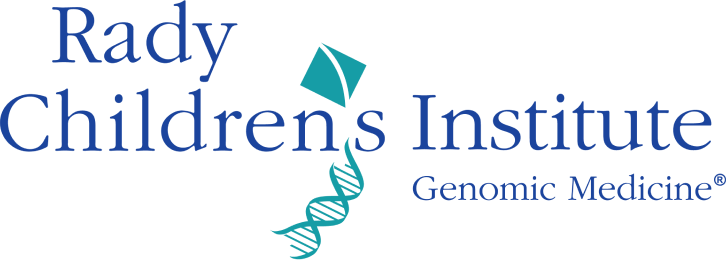Lunapark deficiency leads to an autosomal recessive neurodevelopmental phenotype with a degenerative course, epilepsy and distinct brain anomalies
Brain Commun. 2023 Aug 17;5(5):fcad222. doi: 10.1093/braincomms/fcad222. eCollection 2023. ABSTRACT LNPK encodes a conserved membrane protein that stabilizes the junctions of the tubular endoplasmic reticulum network playing crucial roles in diverse biological functions. Recently, homozygous variants in LNPK were shown to cause a neurodevelopmental disorder (OMIM#618090) in four patients displaying developmental delay, epilepsy and nonspecific […]
Unique Capabilities of Genome Sequencing for Rare Disease Diagnosis
medRxiv. 2023 Aug 13:2023.08.08.23293829. doi: 10.1101/2023.08.08.23293829. Preprint. ABSTRACT BACKGROUND: Causal variants underlying rare disorders may remain elusive even after expansive gene panels or exome sequencing (ES). Clinicians and researchers may then turn to genome sequencing (GS), though the added value of this technique and its optimal use remain poorly defined. We therefore investigated the advantages […]
Biallelic MED27 variants lead to variable ponto-cerebello-lental degeneration with movement disorders
Brain. 2023 Jul 30:awad257. doi: 10.1093/brain/awad257. Online ahead of print. ABSTRACT MED27 is a subunit of the Mediator multiprotein complex, which is involved in transcriptional regulation. Biallelic MED27 variants have recently been suggested to be responsible for an autosomal recessive neurodevelopmental disorder with spasticity, cataracts, and cerebellar hypoplasia. We further delineate the clinical phenotype of […]
The landscape of reported VUS in multi-gene panel and genomic testing: Time for a change
Genet Med. 2023 Jul 30:100947. doi: 10.1016/j.gim.2023.100947. Online ahead of print. ABSTRACT PURPOSE: Variants of uncertain significance (VUS) are a common result of diagnostic genetic testing and can be difficult to manage with potential misinterpretation and downstream costs, including time investment by clinicians. We investigated the rate of VUS reported on diagnostic testing via multi-gene […]
Report of two cases of Schaaf-Yang syndrome: Same genotype and different phenotype
Clin Case Rep. 2023 Jul 30;11(8):e7753. doi: 10.1002/ccr3.7753. eCollection 2023 Aug. ABSTRACT We report two, genotypically identical but phenotypically distinct cases of Schaaf-Yang syndrome and propose the early use of Genome Sequencing in patients with nonspecific presentations to facilitate the early diagnosis of children with rare genetic diseases and improve overall health care outcomes. PMID:37529132 […]
Clinical Variants in C. elegans Expressing Human STXBP1 Reveals a Novel Class of Pathogenic Variants and Classifies Variants of Uncertain Significance
Genetics in Medicine Open (2023), doi: https://doi.org/10.1016/j.gimo.2023.100823. Abstract Purpose: Modeling disease variants in animals is useful for drug discovery, understanding disease pathology, as well as classifying variants of uncertain significance (VUS) as pathogenic or benign. Methods Using Clustered Regularly Interspaced Short Palindromic Repeats (CRISPR), we performed a Whole-gene Humanized Animal Model (WHAM) procedure to replace […]
SLC4A10 mutation causes a neurological disorder associated with impaired GABAergic transmission
Brain. 2023 Jul 17:awad235. doi: 10.1093/brain/awad235. Online ahead of print. ABSTRACT SLC4A10 is a plasma-membrane bound transporter which utilizes the Na+ gradient to drive cellular HCO3- uptake, thus mediating acid extrusion. In the mammalian brain, SLC4A10 is expressed in principal neurons and interneurons, as well as in epithelial cells of the choroid plexus, the organ […]
Rapid Whole-Genomic Sequencing and a Targeted Neonatal Gene Panel in Infants With a Suspected Genetic Disorder
JAMA. 2023 Jul 11;330(2):161-169. doi: 10.1001/jama.2023.9350. ABSTRACT IMPORTANCE: Genomic testing in infancy guides medical decisions and can improve health outcomes. However, it is unclear whether genomic sequencing or a targeted neonatal gene-sequencing test provides comparable molecular diagnostic yields and times to return of results. OBJECTIVE: To compare outcomes of genomic sequencing with those of a […]
Assessing Diversity in Newborn Genomic Sequencing Research Recruitment: Race/Ethnicity and Primary Spoken Language Variation in Eligibility, Enrollment, and Reasons for Declining
Clin Ther. 2023 Jul 8:S0149-2918(23)00220-5. doi: 10.1016/j.clinthera.2023.06.014. Online ahead of print. ABSTRACT PURPOSE: Diagnostic genomic research has the potential to directly benefit participants. This study sought to identify barriers to equitable enrollment of acutely ill newborns into a diagnostic genomic sequencing research study. METHODS: We reviewed the 16-month recruitment process of a diagnostic genomic research […]
Molecular portraits of cell cycle checkpoint kinases in cancer evolution, progression, and treatment responsiveness
Sci Adv. 2023 Jun 30;9(26):eadf2860. doi: 10.1126/sciadv.adf2860. Epub 2023 Jun 30. ABSTRACT Cell cycle dysregulation is prerequisite for cancer formation. However, it is unknown whether the mode of dysregulation affects disease characteristics. Here, we conduct comprehensive analyses of cell cycle checkpoint dysregulation using patient data and experimental investigations. We find that ATM mutation predisposes the […]
